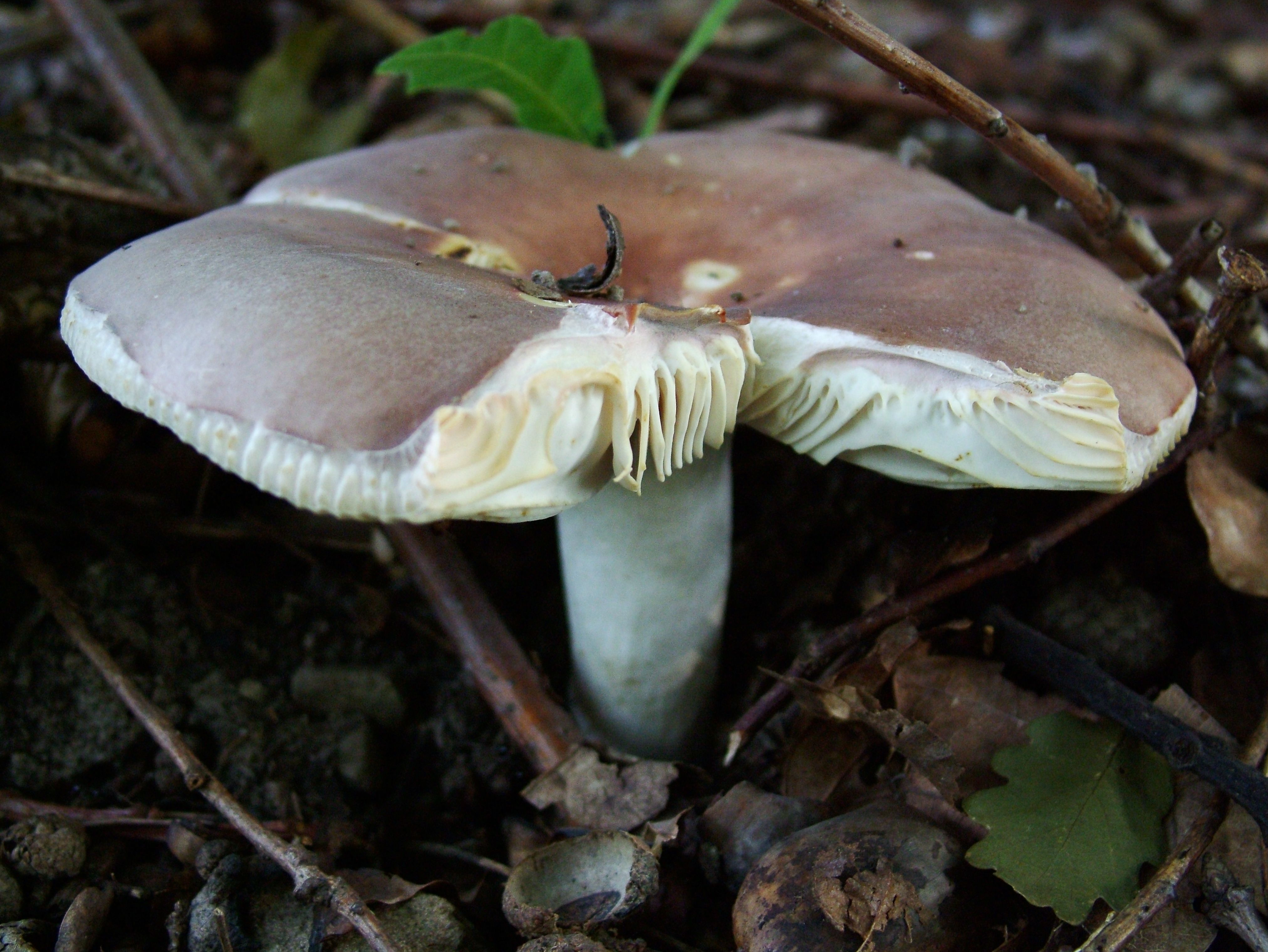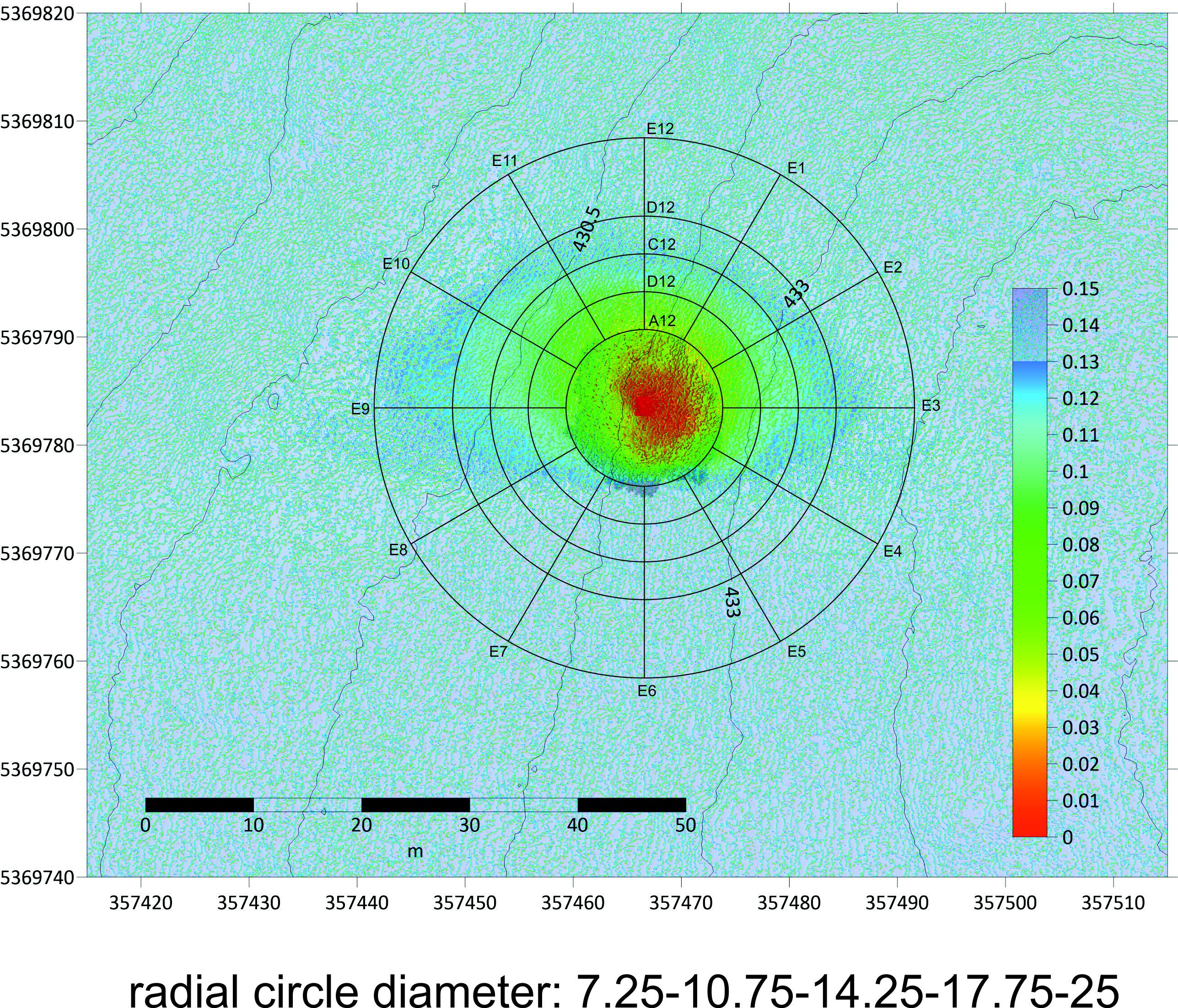Tree and country – influence of trees on diversity of soil microorganisms in agricultural land, Slovak Research and Development Agency project no. APVV-20-0257
About
A solitary tree standing out of continual forest vegetation has well-known positive and negative impacts on grasslands and arable cultures. Close vicinity of tree causes light and wind interception resulting in change of herbal diversity of grasslands or inhibited growth of crop plants in arable agricultures. Positive influences of tree presence are local enhancing of biological diversity associated with improved ecosystem function. Soil fertility, stability of ecosystem and sustainable land management essentially depends on soil quality. Soil microorganisms are very susceptible to changes in soil characteristics and play the fundamental role in nutrient recycling and stability of ecosystem. Changes in microbial communities connected to presence of trees are underexplored but very actual with current effort to improve landscape structure.
Trees are associated with specific groups of fungi; among them are highlighted ectomycorrhizal fungi. Soil of semi-natural grasslands is often dominated by probably biothrophic basidiomycetes and ascomycetes known as CHEGD fungi. In arable soils, special importance is attributed to arbuscular mycorrhizal fungi and presence of parasitic fungi. This project aims to study representation of fungi with symbiotic, saprophytic, parasitic or other trophic guilds resulted from interaction of tree presence in agricultural land. In addition, we will evaluate selected abiotic and biotic soil characteristics to estimate changes in functional diversity. Project uses advances methods in sequencing of environmental DNA, soil analyses and computer modelling of special influence of ecological factors.

State of art
The project includes multidisciplinary approaches of molecular ecology of soil fungi, pedological analyses of abiotic soil properties, and computer modelling of ecological and climate variables. Essential standard methods (plant community structure, basic soil property analyses) are combined with modern progressive methods (next generation sequencing, computer modelling, and assessment of soil enzymatic activities). The project aim to evaluate influence of tree presence on agricultural ecosystems and combining intentionally different trees and agricultural ecosystems is a unique idea. We will use selected enzymatic activities and functional traits of soil fungi as indicators of ecosystem changes.
Aims
The objective of the project is to study influence of solitary tree (or groups of individual tree species) on surrounding agricultural soil ecosystems. To achieve our aims, we will model zones of tree influences before sampling of the soil. Gathered data about soil abiotic properties, enzymatic activities and fungal communities will be used as indicators of ecosystem function.
Major aims of our project are:
- to identify changes in biotic and abiotic soil properties associated with a tree presence in a agro ecosystem
- to recognise differences between tree species and their influence to different arable or pastoral ecosystems
- to develop system of biological and abiotic indicators of soil quality and ecosystem services applicable for evaluation of positive or negative influences of trees
- to estimate spatial distance of tree influence on soil properties
- to identify ecosystem roles and functional traits of selected individual fungal soil-dwelling species with special emphasis to identify microfungi indicating positive soil properties in a long time perspective

Current progress
Three trees were selected from the candidate list prepared in spring 2021, the full list is available here. The trees are located near Dobrá Niva in Central Slovakia. They are oaks on open pasture. They are labelled Q4, Q5 and Q6. The field survey (may 2021) and tree selection was performed just after we learned about project acceptance and before project start (June 2021).
Trees were scanned by team of Juraj Papčo from Technical University of Bratislava by terrestrial LIDAR scanner in September 2021.
Partners from Technical University Bratislava prepared also shadow casted during vegetation season of 1.5-31.10.2021. For every cell/voxel of 5 cm size they modelled light units per day and they pooled these values for the whole period of the estimated season. This is plotted in UTM34 system and provided with altitudinal contours.


Soil sampling
Soil sampling design was prepared in Germany in collaboration with Claus Bässler, the expert on ecological statistics. We decided to adopt his proposal for radial network of sampling. Sampling is designed radially on clock-like 12 hour directions with the noon (12:00) position pointing to north. There are 5 radial zones of sampling from the tree labelled A to E. A zone is approximately on vertical crown projection. Zones B, C and D are approximately outlining different colours of shadow casted by tree, and they are at 3.5 m distance. The outer zone E was estimated to a distance of maximum shadow casted by tree (this mean diameters of 50 respectively 60m of individual trees).
At October 14th and 15th, 2021, S. Adamčík, S. Jančovičová, M. Caboň and V. Shapkin took 60 samples per tree and 3 controls per tree. Two trees have single control located on half way between them. In total we collected 186 samples. For metabarcoding, we collected soil cores with ca. 32 mm pipes in 10 cm depth. Soils for inorganic, enzymatic and ergosterol properties were sampled manually by a scoop, approximately 600 g per sample.
Large samples of soil were sifted by a sieve with 5mm gaps and 100 g was stored at minus 20 for ergosterol and enzymatic activities. These parameters will be analysed by colleagues from Microbiological institute of Technical University Bratislava (organised by Svetlana Kryštofová).
Large amount of soil samples (usually ca. 500 g) will be delivered to Austrian Institute of Technology at October 27th, 2021. Our colleague Markus Gorfer will arrange analyses of water retention capacity and NH4+ and NO3-. He is looking for possibility to perform also SOC, TC, TN and TP analyses in Austria.
Soil for metabarcoding were carefully sorted out of large stone and organic particles and ca. 10 g samples were stored in minus 80 C°.



Project team
Project investigators
Laboratory of Molecular Ecology and Mycology, Plant Science and Biodiversity Centre Slovak Academy of Sciences
Slavomír Adamčík, principal investigator
Miroslav Caboň, researcher
Dobromil Galvánek, senior researcher
Dušan Senko, senior researcher
Jozef Šibík, senior researcher
Milan Valachovič, senior researcher
Katarína Vantarová, senior researcher
Vasilii Shapkin, PhD student
Margita Kovácsová, technician
Gabriela Kozárová, technician
Institute of Molecular Biology Slovak Academy of Sciences
Katarína Chovanová, senior researcher
Marcel Zámocký, senior researcher
Jana Harichová, co-worker specialist
Katarína Semešová, technician
Institute of Forest Ecology Slovak Academy of Sciences
Katarína Adamčíková, senior researcher
Slovak University of Technology in Bratislava Faculty of Chemical and Food Technology
Michal Kaliňák, researcher
Barbora Kaliňáková, researcher
Svetlana Kryštofová, researcher
Martin Šimkovič, associate professor, senior researcher
Ivana Žideková, researcher
Helena Galádová, PhD student
Noémi Molnárová, PhD student
Zoltán Polozsányi, PhD student
Comenius University in Bratislava Faculty of Natural Sciences, Department of Botany
Soňa Jančovičová, associate professor, senior researcher
collaborators
Juraj Papčo, Slovak University of Technology in Bratislava, Faculty of Civil Engineering
Claus Bässler, Goethe-Universität Frankfurt, Institute for Ecology, Evolution and Diversity, Department of Conservation Biology
Marcus Gorfer, University of Natural Resources and Life Sciences (BOKU), Institute of Microbial Genetics
Publications


